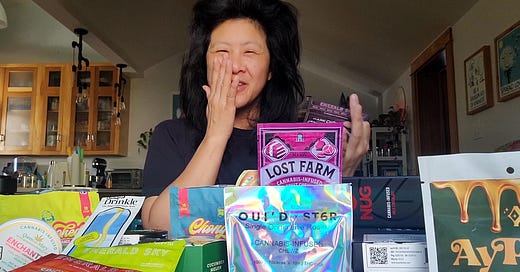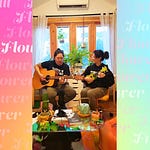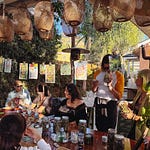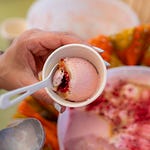I knew it was going to be gross. From the moment I set eyes on the package, I knew I would hate it. But I tasted it anyway.
The color actually looks beautiful, if it weren’t meant to be ingested. Tiny specks of yellow oil are suspended in neon alien blue-colored goo. I poke at it with my finger and lick a tiny bit to taste. The thick goo is slimy and viscous. I mix it with some sparkling water to help make it more palatable but the goo bobs between the bubbles.
Several hours later, as I’m waiting for the taste and equally unpleasant high to dissipate from my body I wonder, “Why would you do this to a plant?”
I don’t like this product. But we all have different tastes, so I try my best to be objective and fair to the product’s intended audience.
Want to know what makes a good edible? Here’s how I judge and evaluate edibles for The Emerald Cup and Budist.
Ingredients
Quality of C*nn*b*s
Looks + Aroma
Flavor + Texture
Effects
Uniqueness + Innovation
FOR PAID SUBSCRIBERS
**These are my own personal opinions and preferences, not official standards set by Emerald Cup or Budist.**
Ingredients
What is this edible made with? Look on the back of the package and review the ingredient list. I notice the list of ingredients. Products using natural, healthier ingredients will score higher.
Natural and/or organic vs. processed
Sugar – naturally derived vs. corn syrup or isomalt
Flavors – fruit and vegetable derived vs. artificial
Preservatives or Colors – none or as little as possible
Quality of C*nn*b*s
What type of c*nn*b*s is used to make this edible? This info should be labeled on the package and gives a clue on what type of effects I should expect. Look for these terms below, listed in order of best quality to least.
Listen to this episode with a 7-day free trial
Subscribe to Fruit+Flower Unfurled to listen to this post and get 7 days of free access to the full post archives.













